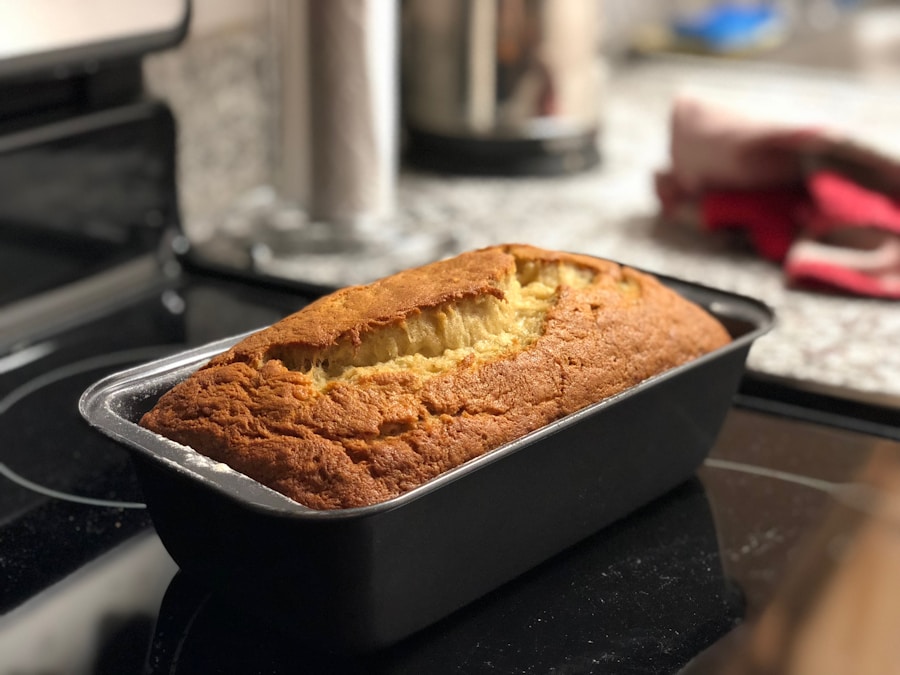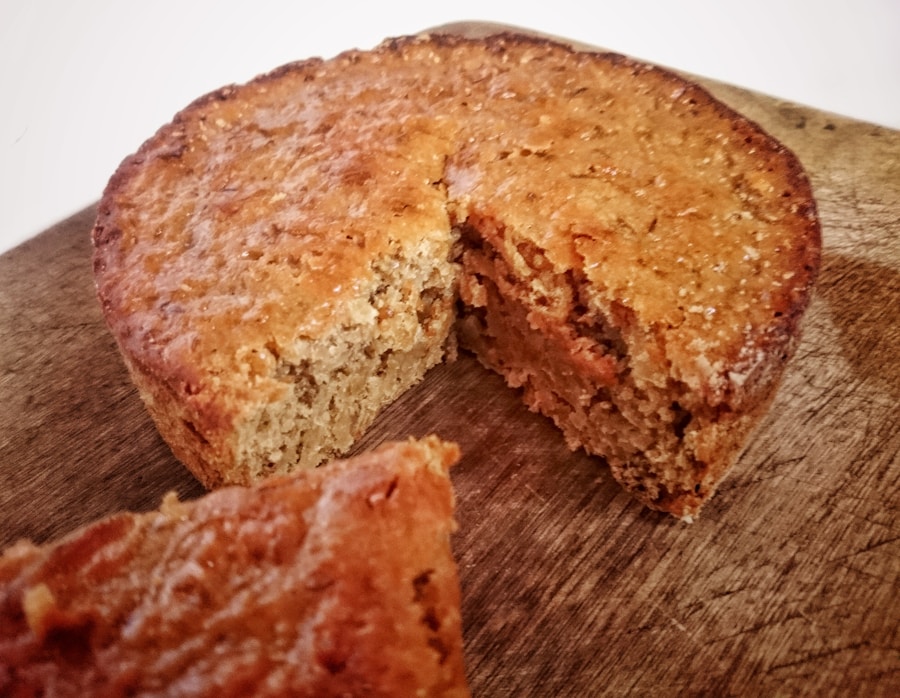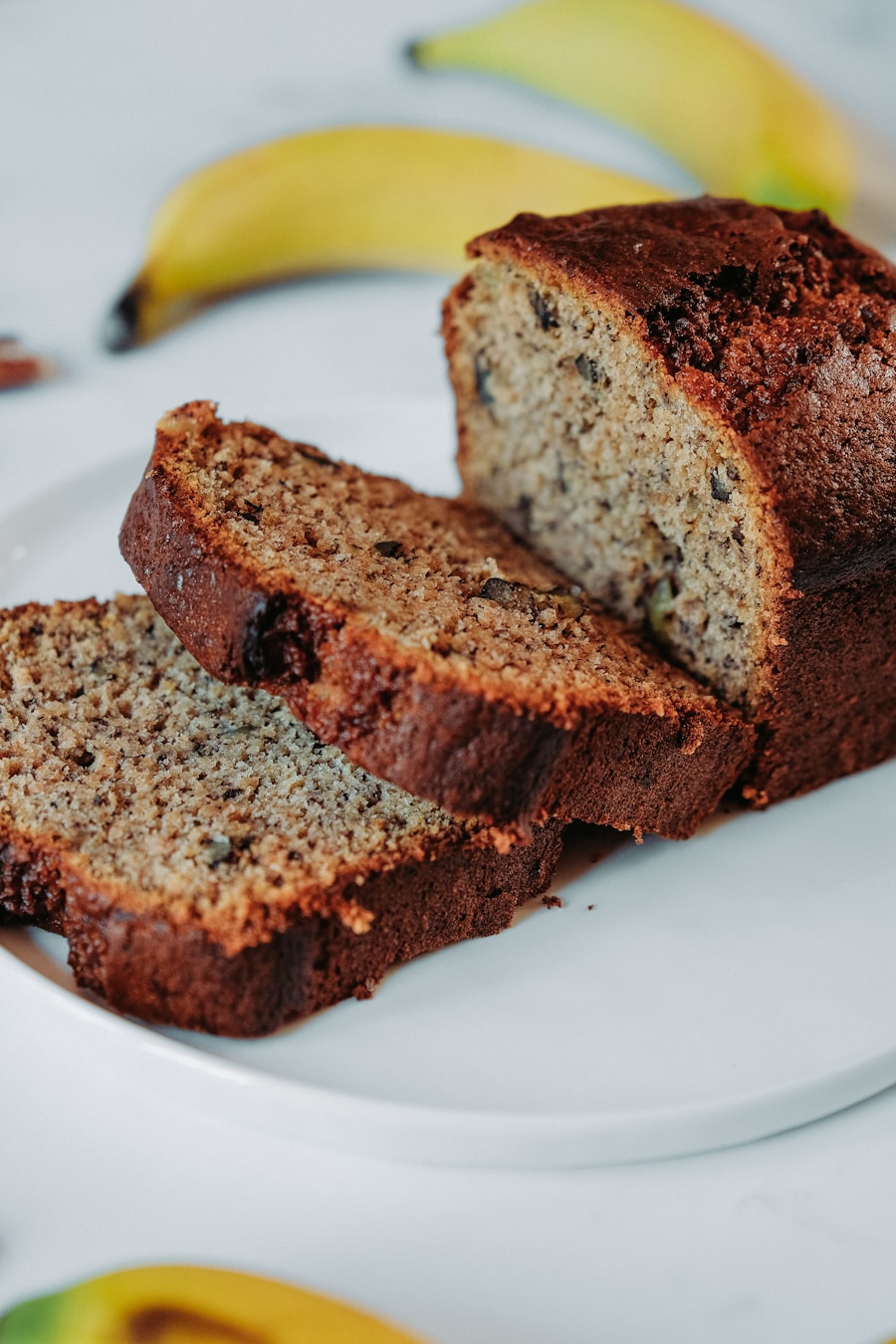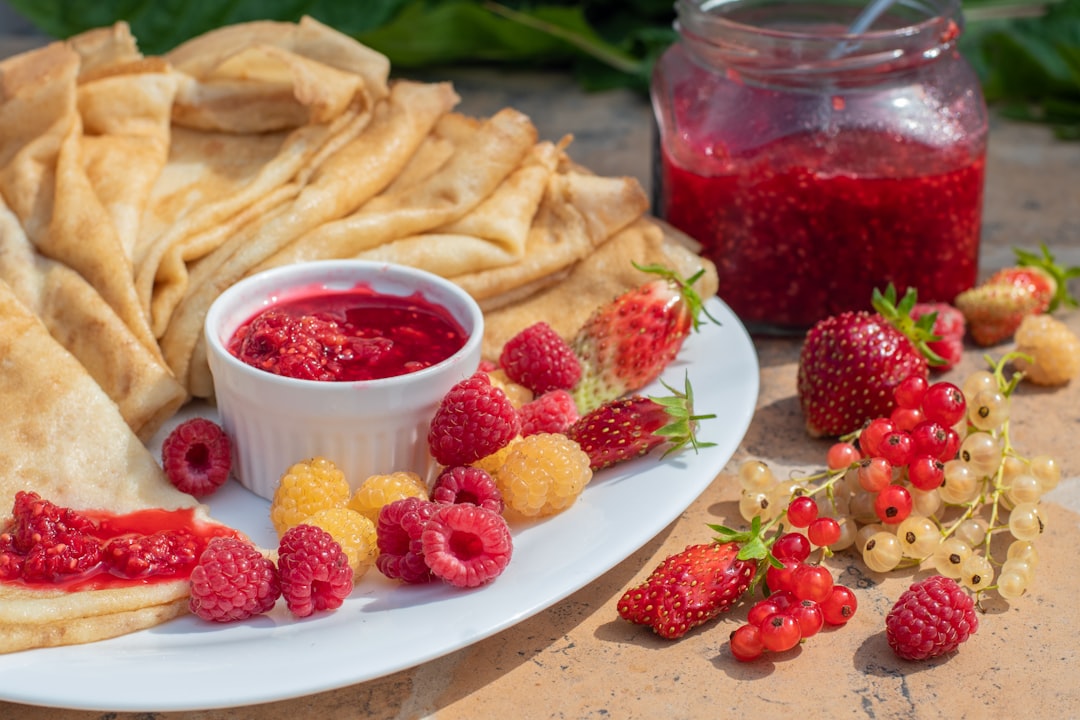Banana bread is a beloved baked good that has found its way into kitchens around the world, cherished for its moist texture and rich flavor. This delightful loaf is not only a delicious treat but also a practical solution for overripe bananas that might otherwise go to waste. The origins of banana bread can be traced back to the Great Depression, when resourcefulness in the kitchen became essential.
Home bakers began to experiment with bananas, which were inexpensive and widely available, leading to the creation of this now-classic recipe. Over the years, banana bread has evolved, with countless variations emerging, but its core appeal remains unchanged: it is simple to make and incredibly satisfying. The beauty of banana bread lies in its versatility.
It can be enjoyed as a breakfast item, a snack, or even a dessert. The aroma of freshly baked banana bread wafting through the house is enough to evoke feelings of comfort and nostalgia. Whether you are a seasoned baker or a novice in the kitchen, banana bread offers an accessible entry point into the world of baking.
With just a few basic ingredients and some ripe bananas, anyone can create a loaf that is both delicious and rewarding.
Key Takeaways
- Banana bread is a popular and delicious baked treat that is perfect for using up overripe bananas.
- The key ingredients for banana bread include ripe bananas, flour, sugar, eggs, butter, baking soda, and salt.
- Making banana bread involves mashing the bananas, mixing the wet and dry ingredients separately, and then combining them before baking.
- Tips for perfecting banana bread include using very ripe bananas, not overmixing the batter, and adding mix-ins like nuts or chocolate chips.
- Variations and add-ins for banana bread can include nuts, chocolate chips, dried fruit, or even a swirl of Nutella.
Ingredients for Banana Bread
To create a classic banana bread, you will need a handful of essential ingredients that come together to form a harmonious blend of flavors and textures. The star of the show, of course, is the ripe bananas. Ideally, you should use bananas that are well past their prime—those with brown spots or even blackened skins—since they are sweeter and more flavorful than their yellow counterparts.
The natural sugars in overripe bananas contribute to the moistness of the bread and enhance its overall taste. In addition to bananas, you will need all-purpose flour, granulated sugar, baking soda, salt, eggs, and unsalted butter. The flour provides structure to the loaf, while sugar adds sweetness and helps with browning during baking.
Baking soda acts as a leavening agent, ensuring that the bread rises properly and achieves a light texture. Salt is crucial for balancing flavors, while eggs contribute richness and moisture. Finally, melted butter adds a luscious quality to the bread, making it tender and flavorful.
Some recipes may also call for sour cream or yogurt to enhance moisture further.
Step-by-Step Instructions for Making Banana Bread

Making banana bread is a straightforward process that can be broken down into several easy steps. Begin by preheating your oven to 350°F (175°C) and greasing a 9×5-inch loaf pan. This ensures that your banana bread will slide out easily once it’s baked.
Next, in a large mixing bowl, mash the ripe bananas with a fork or potato masher until they reach a smooth consistency. It’s perfectly fine to leave some small chunks for added texture. In another bowl, cream together the melted butter and sugar until well combined.
This step is crucial as it helps to incorporate air into the mixture, contributing to the bread’s lightness. Once combined, add the eggs one at a time, mixing well after each addition. Then stir in the mashed bananas until fully incorporated.
In a separate bowl, whisk together the flour, baking soda, and salt. Gradually add this dry mixture to the wet ingredients, stirring gently until just combined. Be careful not to overmix; a few lumps are perfectly acceptable.
Once your batter is ready, pour it into the prepared loaf pan and smooth the top with a spatula. Bake in the preheated oven for about 60-70 minutes or until a toothpick inserted into the center comes out clean. The baking time may vary depending on your oven and the moisture content of your bananas.
Once baked, allow the banana bread to cool in the pan for about 10 minutes before transferring it to a wire rack to cool completely.
Tips for Perfecting Banana Bread
| Tips | Details |
|---|---|
| Ripe Bananas | Use overripe bananas for a sweeter flavor and moist texture. |
| Proper Mixing | Avoid overmixing the batter to prevent a tough banana bread. |
| Correct Pan Size | Use the recommended pan size to ensure even baking. |
| Evenly Distributed Ingredients | Ensure all ingredients are evenly distributed for a consistent texture. |
| Accurate Baking Time | Follow the recommended baking time to avoid under or overcooked banana bread. |
Achieving the perfect banana bread requires attention to detail and a few helpful tips that can elevate your baking game. One key factor is ensuring that your bananas are adequately ripe; they should be soft and speckled with brown spots for optimal sweetness and flavor. If you find yourself short on time and need ripe bananas quickly, you can speed up the ripening process by placing them in a paper bag at room temperature or even baking them in their skins at 300°F (150°C) for about 15-20 minutes.
Another important tip is to measure your flour accurately. Too much flour can lead to a dense loaf, while too little can result in a bread that doesn’t hold together well. For best results, use the spoon-and-level method: spoon flour into your measuring cup and level it off with a knife without packing it down.
Additionally, consider using room temperature ingredients; this helps create an even batter that mixes more easily. Lastly, don’t hesitate to experiment with baking times based on your oven’s performance. Ovens can vary significantly in temperature accuracy; therefore, checking for doneness a few minutes before the recommended time can prevent overbaking.
If you notice that the top of your banana bread is browning too quickly while baking, you can tent it with aluminum foil to protect it from direct heat.
Variations and Add-Ins for Banana Bread
While traditional banana bread is delightful on its own, there are numerous variations and add-ins that can enhance its flavor profile and texture. One popular option is incorporating nuts such as walnuts or pecans into the batter. Chopped nuts add a satisfying crunch and complement the soft texture of the bread beautifully.
For those who enjoy chocolate, adding chocolate chips or chunks can transform your banana bread into an indulgent treat that appeals to chocolate lovers. Another exciting variation involves spices; cinnamon and nutmeg are excellent choices that can elevate the flavor of your banana bread significantly. A teaspoon of vanilla extract can also add depth and warmth to the overall taste.
For those looking for a healthier twist, consider substituting some of the all-purpose flour with whole wheat flour or adding oats for added fiber. Fruit can also be an excellent addition; blueberries or shredded coconut can provide bursts of flavor and moisture throughout the loaf. If you’re feeling adventurous, try incorporating peanut butter or Nutella swirls into your batter before baking for an unexpected twist on this classic recipe.
Serving Suggestions for Banana Bread

Banana bread is incredibly versatile when it comes to serving options, making it suitable for various occasions throughout the day. For breakfast, consider slicing warm banana bread and spreading a thin layer of butter or cream cheese on top for added richness. Pairing it with fresh fruit or yogurt can create a balanced meal that’s both satisfying and nutritious.
As an afternoon snack or dessert, banana bread can be enjoyed plain or dressed up with toppings such as whipped cream or ice cream. A scoop of vanilla ice cream served alongside warm slices of banana bread creates a delightful contrast between warm and cold temperatures while enhancing the overall experience with creamy sweetness. For gatherings or brunches, consider serving banana bread as part of a larger spread alongside other baked goods like muffins or scones.
You could also slice it into smaller pieces for easy sharing among guests. Drizzling honey or maple syrup over individual slices can add an extra touch of sweetness that elevates this already delicious treat.
Storing and Freezing Banana Bread
Proper storage is essential for maintaining the freshness of your banana bread after baking. To keep it at its best, allow it to cool completely before wrapping it tightly in plastic wrap or aluminum foil. This will help retain moisture and prevent it from drying out.
Store your wrapped banana bread at room temperature for up to three days; however, if you want to extend its shelf life further, consider refrigerating it. For longer-term storage, freezing banana bread is an excellent option that allows you to enjoy this delicious treat at your convenience. To freeze banana bread effectively, slice it into individual portions before wrapping each slice tightly in plastic wrap followed by aluminum foil or placing them in airtight freezer bags.
This method not only preserves freshness but also makes it easy to grab just one slice when cravings strike. When you’re ready to enjoy your frozen banana bread, simply remove it from the freezer and let it thaw at room temperature for about an hour or two. Alternatively, you can reheat slices in the microwave for about 15-20 seconds or toast them lightly in a toaster oven for added warmth and texture.
Conclusion and Final Thoughts on Banana Bread
Banana bread stands as a testament to culinary creativity born from necessity—a simple yet satisfying recipe that has captured hearts across generations. Its ease of preparation makes it an ideal choice for both novice bakers and seasoned chefs alike. With just a few basic ingredients and some ripe bananas, anyone can create a loaf that brings comfort and joy.
The versatility of banana bread allows for endless experimentation with flavors and textures through various add-ins and variations. Whether enjoyed plain or dressed up with toppings, this delightful treat fits seamlessly into any meal or occasion. With proper storage techniques in place, you can savor homemade banana bread long after it comes out of the oven.
Ultimately, banana bread is more than just a recipe; it’s an experience filled with warmth and nostalgia that invites bakers to share their creations with family and friends alike. So next time you find yourself with overripe bananas on hand, remember that you have all you need to whip up this timeless classic that continues to delight palates everywhere.



